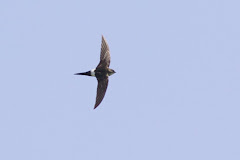
Yesterday I took my brand new (to me) bicycle to Kongelunden to give it a run out. Cycling is something I haven't done in ages and it showed. Firstly my thighs started to ache almost immediately (in fact, before I had even turned out of my road) and secondly my bum hurt so much by the end that I had to ride standing up! (Why are bike saddles so uncomfortable?).
Anyway, after an hour of cycling (Denmark is pretty flat, so it's easy going) I reached Kongelunden, a small woodland at the south of Amager. I had heard on the Danish bird grapevine that there were a couple of Firecrests around, so thought I would have a quick look. After 30 minutes of searching there was no sign but I did see two Treecreepers. Now, in Britain when one sees a Treecreeper it is almost certainly the subspecies "certhia macrodactyla", the western Europe version. But on the continent, things get more tricky. In Denmark there is the "certhia familiaris" which is the Fenno-scandian and Eastern European version (slightly brighter and whiter than the British version), and then there is the very similar (but a separate species) Short-toed Treecreeper (certhia brachydactyla) which differs from the other two by having a louder, more penetrating call, a slightly different pattern on the wing and a (relatively) short hind-claw. All a bit of a nightmare to separate in the field which is where a digital camera comes in handy.
The photo above is of the bird I saw yesterday and, by zooming in, I can exclusively reveal that is a "certhia familiaris" (the Fenno-Scandian version) which is probably what one would expect in such a location. How can I tell? Well, the stripe through the eye is quite prominent and appears in front of the eye as well as behind. Also, the wing pattern is typical familiaris and the hind claw is long, relative to a "Short-Toed treecreeper". Thus the features point to "certhia familiaris".
So there you go.. if you ever see a Treecreeper and wonder which version it is, you might just have a chance...
Also added Brambling and Coal Tit to my Danish list, making 91 in total so far.














